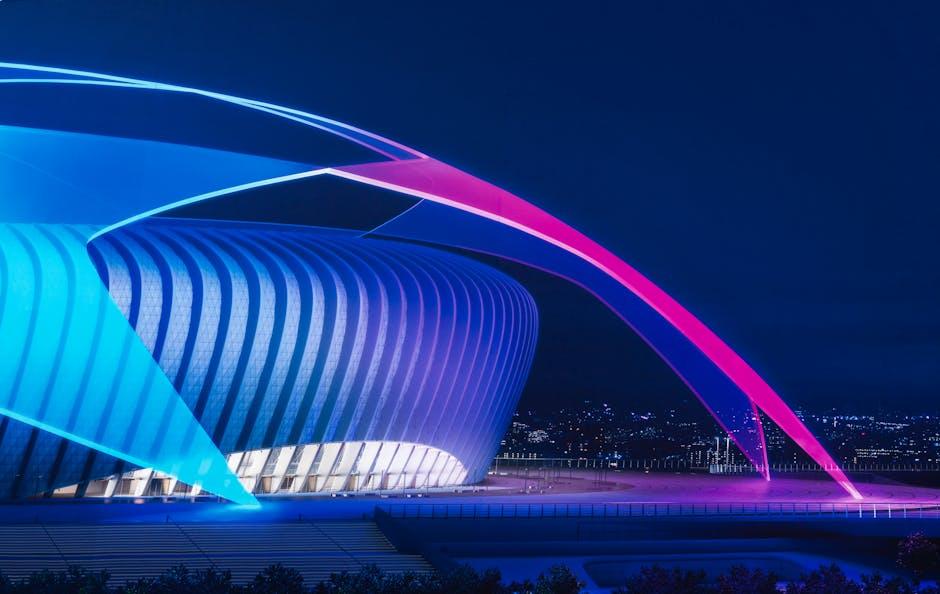In the enchanting world of cinema, where stories come alive and imagination knows no bounds, visual transitions are the silent magicians guiding audiences from one scene to the next. These seamless shifts, often unnoticed by the untrained eye, are meticulously crafted by filmmakers to ensure a fluid narrative journey. Whether whisking viewers through time and space or subtly altering the mood, these transitions are the unsung heroes of cinematic storytelling. This article delves into the artistry and techniques behind these invisible bridges, revealing how filmmakers masterfully orchestrate transitions to weave together the tapestry of a film.
Crafting the Illusion of Continuity: Techniques and Tools
Filmmakers often rely on a variety of techniques to maintain the audience’s suspension of disbelief and create a fluid narrative. One of the most critical elements is the match cut, a method that seamlessly links two scenes with similar visual or thematic elements. This technique can transport viewers from one location to another without breaking the narrative flow, using clever visual alignments or thematic connections.
- Sound Bridges: Overlapping sound from one scene to another to smooth the transition.
- L-Cuts and J-Cuts: Allowing audio from the next scene to start before or continue after the visual cut.
- Graphic Match: Aligning visual elements like shapes or colors to connect scenes.
- Cross Dissolves: Gradually blending one scene into another for a softer transition.
These tools, when skillfully applied, guide the viewer through the story without drawing attention to the cuts themselves, ensuring an immersive cinematic experience.

Mastering the Art of Match Cuts and Crossfades
In the realm of film editing, two techniques stand out for their ability to create fluid visual transitions: match cuts and crossfades. These tools, when wielded with precision, can weave a seamless narrative thread, guiding the audience through the story with elegance and subtlety.
Match cuts are powerful in their simplicity. They rely on visual or thematic similarities between two scenes to create a sense of continuity. For instance, a door closing in one scene might transform into a similar motion in another, bridging disparate moments into a cohesive whole. This technique is not just about aesthetics; it’s about maintaining the rhythm of the narrative.
- Visual Similarity: Aligning shapes, colors, or movements.
- Thematic Connection: Linking ideas or emotions.
Crossfades, on the other hand, gently dissolve one image into another, often used to signify the passage of time or a change in location. This technique softens transitions, creating a dreamy, almost ethereal flow between scenes. By blending images together, filmmakers can evoke a sense of continuity that feels both organic and intentional.
- Time Transition: Indicating a shift in time or setting.
- Emotional Resonance: Enhancing mood and atmosphere.
Mastering these techniques requires a keen eye for detail and a deep understanding of storytelling. When done right, match cuts and crossfades transform simple edits into a dance of imagery, keeping viewers entranced and engaged.

Harnessing Digital Technology for Fluid Transitions
In the digital age, filmmakers have a wealth of tools at their disposal to craft transitions that not only connect scenes but also enhance the storytelling experience. Digital technology allows for the creation of transitions that are visually stunning and virtually imperceptible. By leveraging software like Adobe After Effects and DaVinci Resolve, filmmakers can experiment with a myriad of effects that make scene changes feel natural and fluid.
- Match Cuts: Aligning elements from consecutive scenes to create a seamless flow.
- Digital Morphing: Transforming one image into another for a smooth transition.
- Color Grading: Using consistent color palettes to bridge visual gaps between scenes.
With the ability to manipulate pixels down to the finest detail, editors can now blend images, match movements, and even simulate camera movements post-production. This digital finesse results in transitions that not only support the narrative but also captivate audiences, making them an integral part of modern filmmaking.

Practical Tips for Filmmakers: Achieving Seamless Visual Flow
To craft a visually seamless experience, filmmakers employ a variety of techniques that guide the audience smoothly from one scene to the next. One essential strategy is mastering the art of matching action. This involves cutting from one shot to another where the action is continuous, ensuring the movement flows naturally. For instance, a character starting to open a door in one shot should be shown completing the action in the next. This maintains the momentum and keeps viewers engaged.
- Use of Color and Lighting: Maintaining consistent color palettes and lighting schemes across scenes can help in creating a harmonious transition. Subtle shifts in tone can signal a change in mood or time without jarring the audience.
- Sound Bridges: Utilizing audio to connect scenes, such as carrying over dialogue or ambient sounds, can provide a seamless auditory transition, smoothing over visual cuts.
- Visual Motifs: Repeated patterns or symbols can act as visual anchors, helping to link disparate scenes thematically and visually.
By thoughtfully integrating these techniques, filmmakers can guide their audience through the narrative effortlessly, enhancing the storytelling experience.

